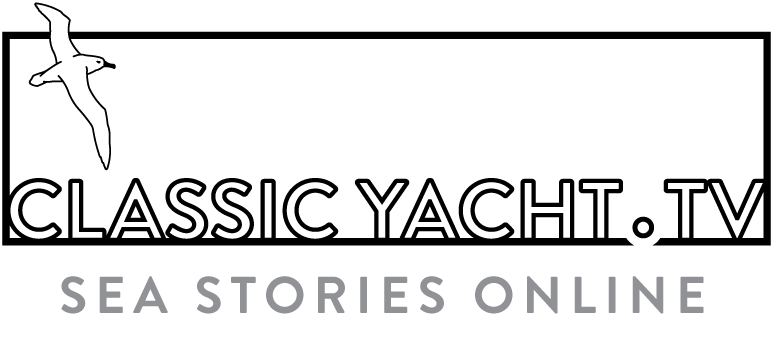A Void In the Workshop
A Message-In-A-Bottle story direct from the Collars workshop. Written by Jeremy Freeland.
Collars, the spar maker, has just completed a significant repair on the rig of the Laurent Giles designed Bermudan cutter ‘CETEWAYO’, in time for this season’s racing.
Here, Jeremy Freeland describes the mast’s ongoing relationship with the Collars’ workshop and its craftsmen and the feeling when it finally returns to the boat and the care of the owner.
We, of course, take great satisfaction in the successful completion and delivery of a project. The pride we have in the final product, often the result of months of work and collaboration with an owner, when a spar or rig is finally united with the expectant boat, making her a complete yacht once again is a tremendous feeling of achievement. We know in the back of our minds that we will always have a personal connection with the boat, even if it is just the scribbled signatures of the the guys who built the mast, hidden forever somewhere inside the central hollowing.
There is another side to our work that an owner rarely sees and it happens as soon as the rig leaves our workshop, en route to the waiting yacht. That feeling of emptiness, almost loss. There is a sudden, large void in the workshop. That mast we cursed for being in the way or constantly had to stoop under has now gone! That same mast that started life from a single phone call, sometimes a year previously and consumed hours of discussion, even before a length of timber was selected. We came to know every square inch of it, inside and out. Whether through the shaping, sanding or carefully applying numerous coats of varnish by hand, each one of us created this work of art and when it leaves, all we are left with is an empty space.
Rather like a child leaving home, we know the inevitable is going to happen but we are never quite prepared for that feeling when they’ve gone; that huge sense of accomplishment combined with the worry of how they will cope. Handing the mast over to it’s rightful owner and custodian is just as emotional for us. Is it going to be looked after and cared for? Will they appreciate the months of work spent making this intricately designed and handcrafted object? The sweat and occasionally tears, that have gone into creating it. Will we ever see it again?
The process of designing and implementing a build of a new rig is a project undertaken regularly by Collars. It all starts in collaboration with a highly skilled naval architect who will draw up the design alongside the owner’s requirements. Before the build commences, a carefully planned schedule is put in place allowing for a successful project to be delivered on time.
This schedule has to take into account the timescale for the fittings to be made to measure by a fabricator. Whilst these are in production, the best timber will be selected, cut and glued in readiness for shaping to the fittings, when they are delivered to the workshop. Once shaping and fine sanding is complete the all-important and gleaming multiple layers of varnish can be applied. The final stage is the dressing of the mast, ready for sending off to the boat. The communication and co-ordination between client, Collars and fabricator is paramount in order to deliver a new rig on time.
Thankfully, the answer to all our concerns is usually “yes”, but we still have the nagging doubt in our heads as we pack away the tools and tidy the workshop, in readiness for the next project to be conceived and born. It’s never long before the void is filled and the process starts all over again.
Sometimes years go by before we get news of our spars, often it’s by chance when walking the dockside at a classic regatta or maybe a call from an owner needing some varnishing advice. Occasionally, it can be an email with photographs attached. Unfortunately, this normally arrives following the discovery of a problem. An email titled ‘CETEWAYO’S Mast’ was one such occasion.
Half way through her second season, with naval architect Theo Rye’s newly designed 76’ mast, the Laurent Giles classic ‘CETEWAYO’ embarked on a rather blustery Round the Island Race from Cowes, Isle of Wight, UK. Although she finished and earned a good position in her class, it wasn’t until a couple of weeks later when a problem was noticed.
During a normal rig check the week before the Panerai British Classic Yacht Club regatta week, a vertical crack in the timber had appeared, on the forward port quarter at the point where the ⅞ forestay intersects with the mast. The normal array of questions sprang to mind: Why has it cracked? What event has caused it to fail? Is it repairable? Do we need to take the rig out?
Plans for the day were put on hold whilst we started to gather answers to some of the many questions. A flurry of phone calls began and within a matter of hours we had managed to establish the cause and, more importantly, put in place a plan to resolve the problem for the owner.
Theo’s intuitive eye spotted the likely cause: a flogging kite with just too little backstay tension could have allowed enough sideways movement in the forestay tang to potentially crack the timber. Luckily for the owner, it was likely to be partially cosmetic and could be fixed with the rig in situ. We could avoid having to take the rig out, carry out the work at the yard on the south coast and then re-step the mast. The relieved owner had his answer to the all-important burning question: Yes, the boat would be ready and able to sail in the Classic Regatta 3 days later.
Within 24 hours, a team from our workshop were onboard and, with the combination of some large clamps and ratchets straps, were working aloft, gluing the timber back in place and making good. One of the conditions of Collars fixing it in situ was that we could have the rig back to the workshop at the end of the season to repair it properly.
CETEWAYO had a great week at the Panerai British Classic Yacht Club Regatta and came away with a third over-all.
True to the owner’s word, on an autumnal day last year, the mast rolled back up our drive and was unloaded safely into the workshop, back into the exact position it had sat 18 months prior. On closer examination, the cause was exactly as we thought and to stop any possibility of it occurring again, some small modifications to the forestay fitting were needed. Repairing the timber with the mast on trestles was far easier than working aloft and with a new 2 metre length of matching timber scarfed into the full width of the forward face, all traces of the season’s battle scars were removed.
“we will always have a personal connection with the yacht – its rig – even if it’s just the scribbled signatures of the guys who built the mast, hidden forever somewhere inside the central hollowing.”






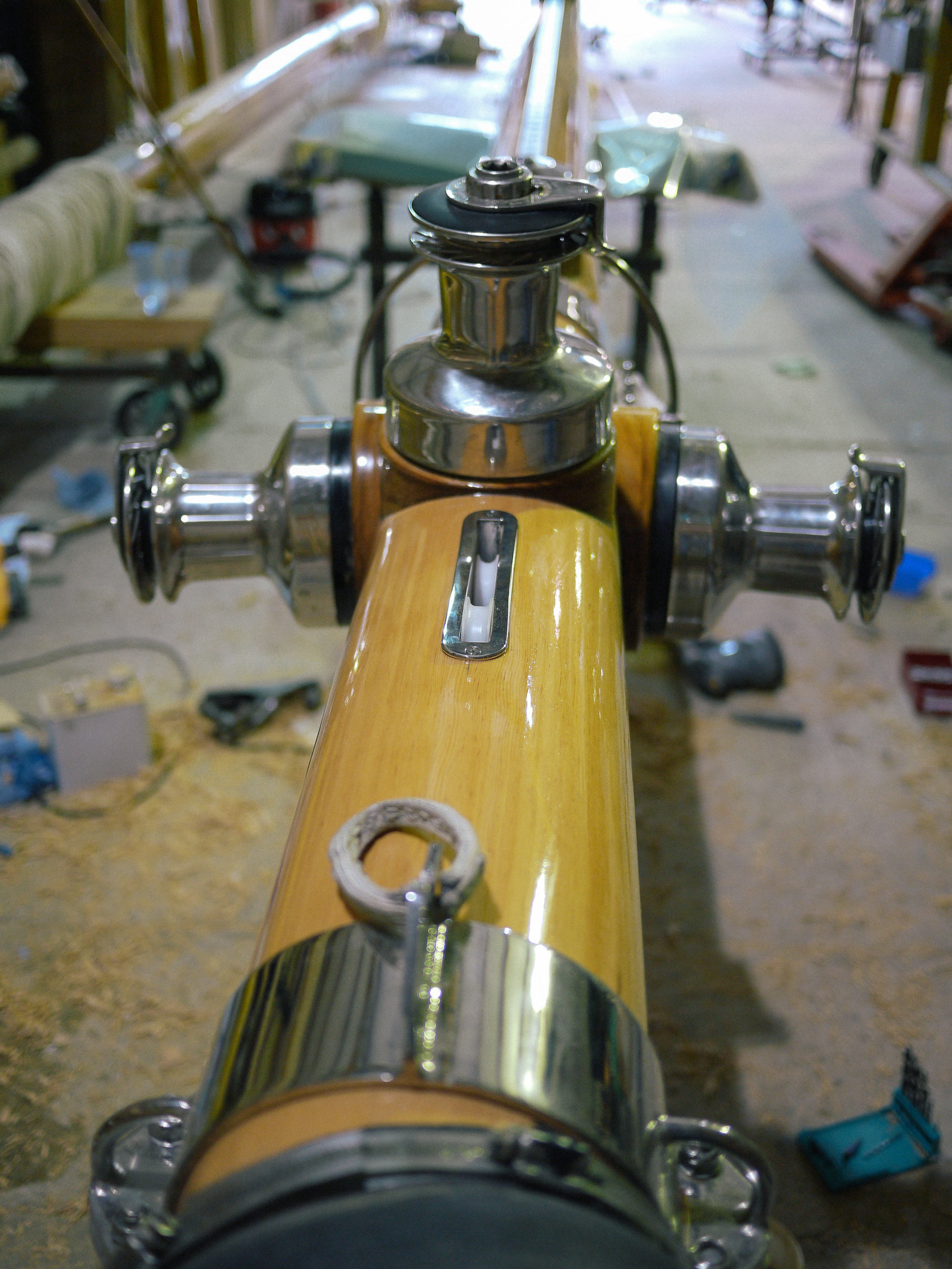
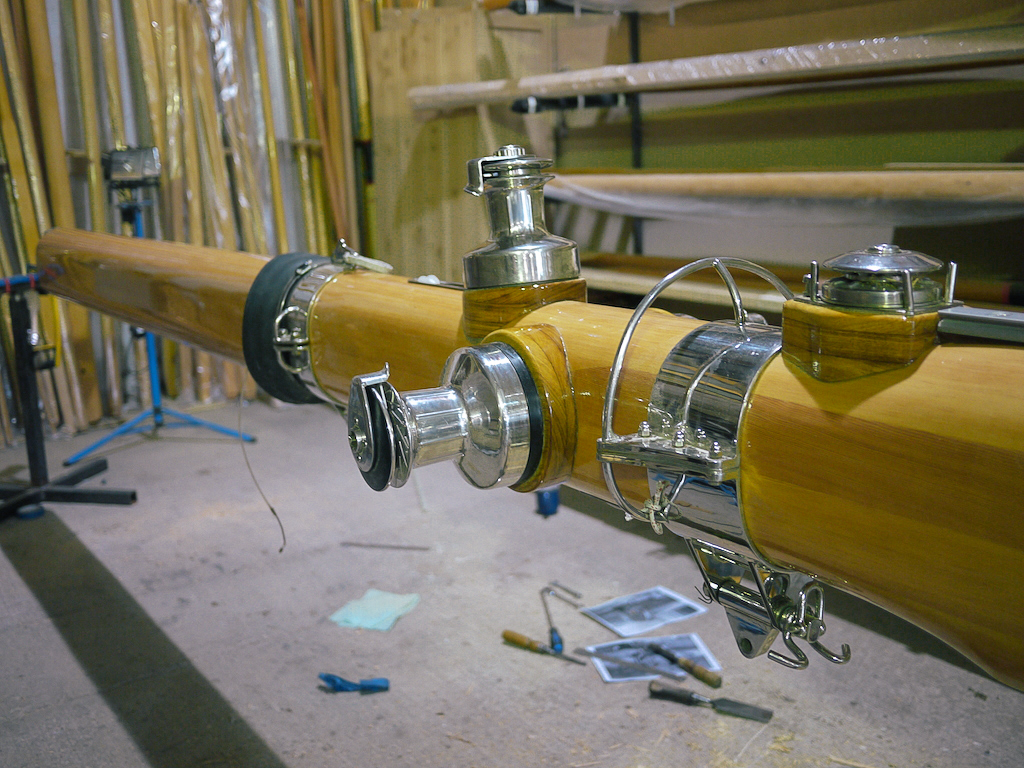
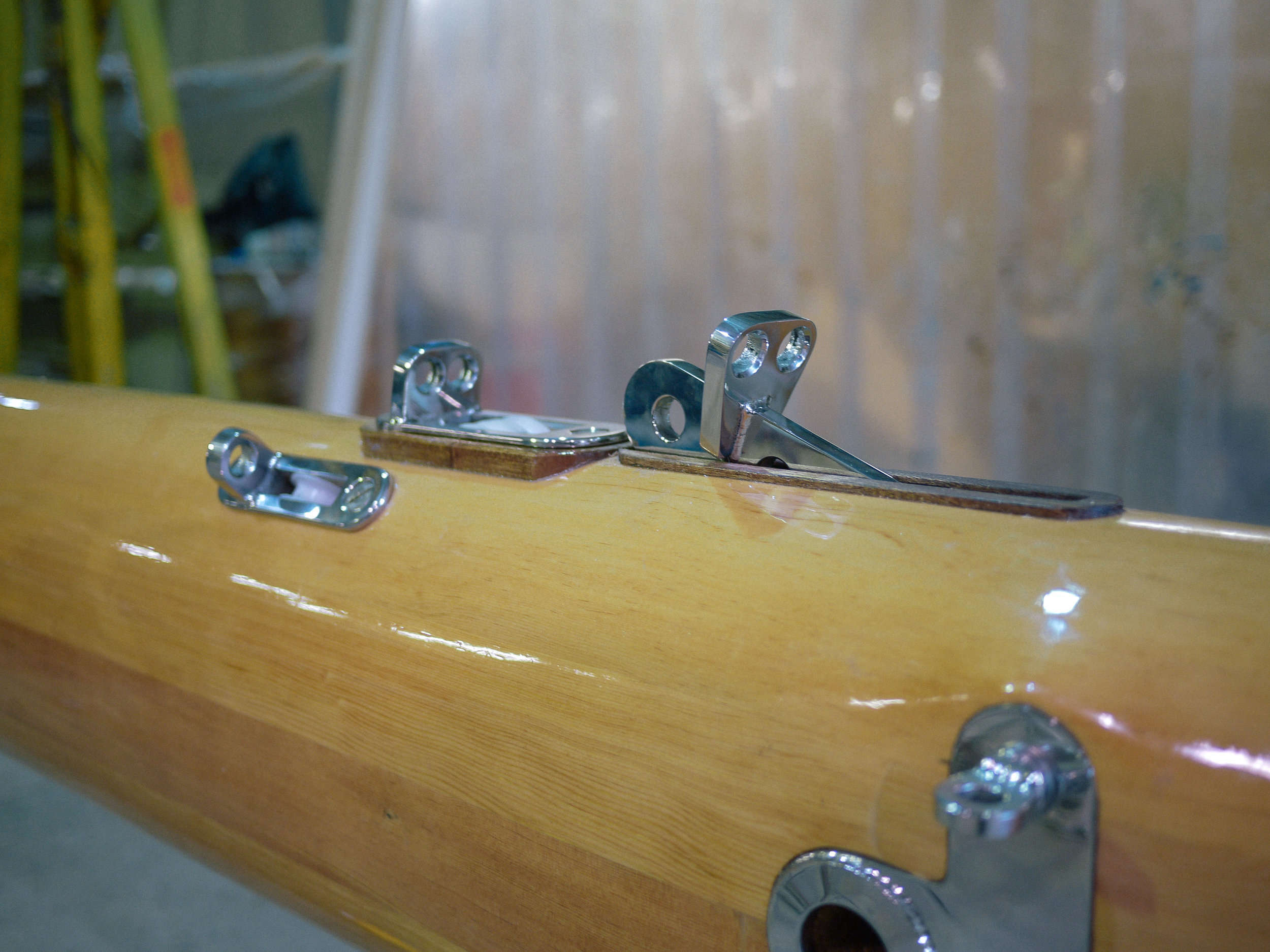
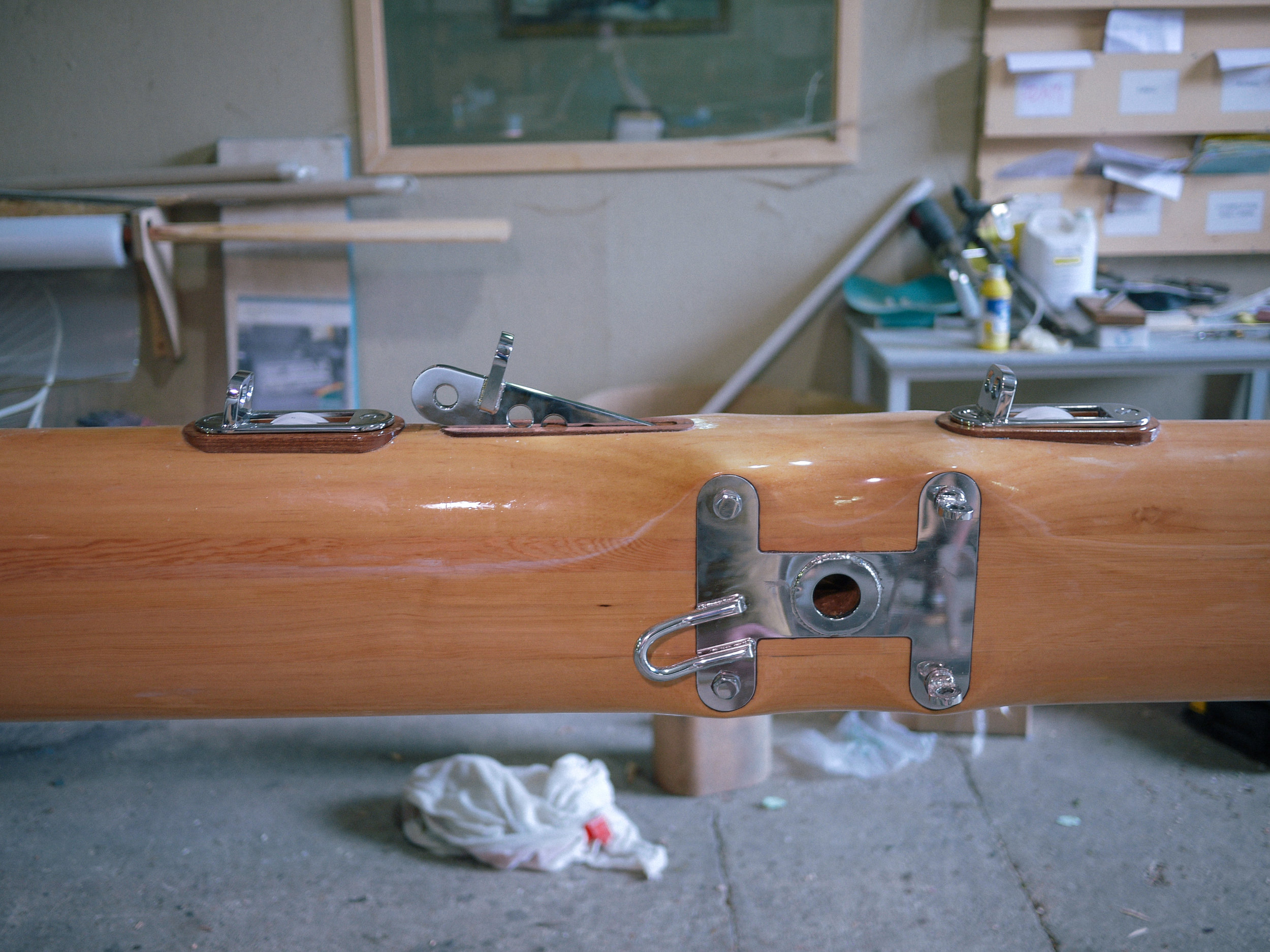
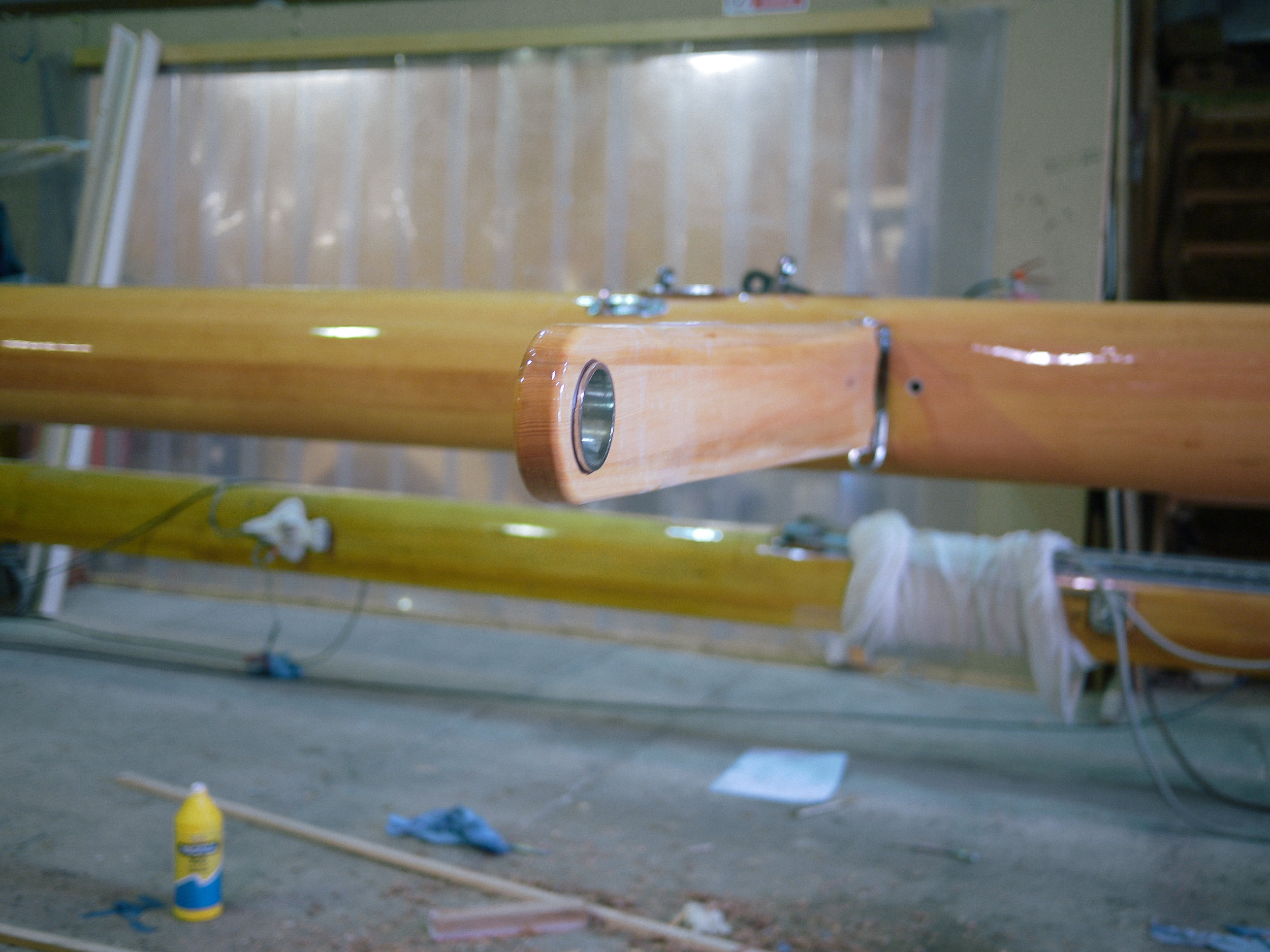
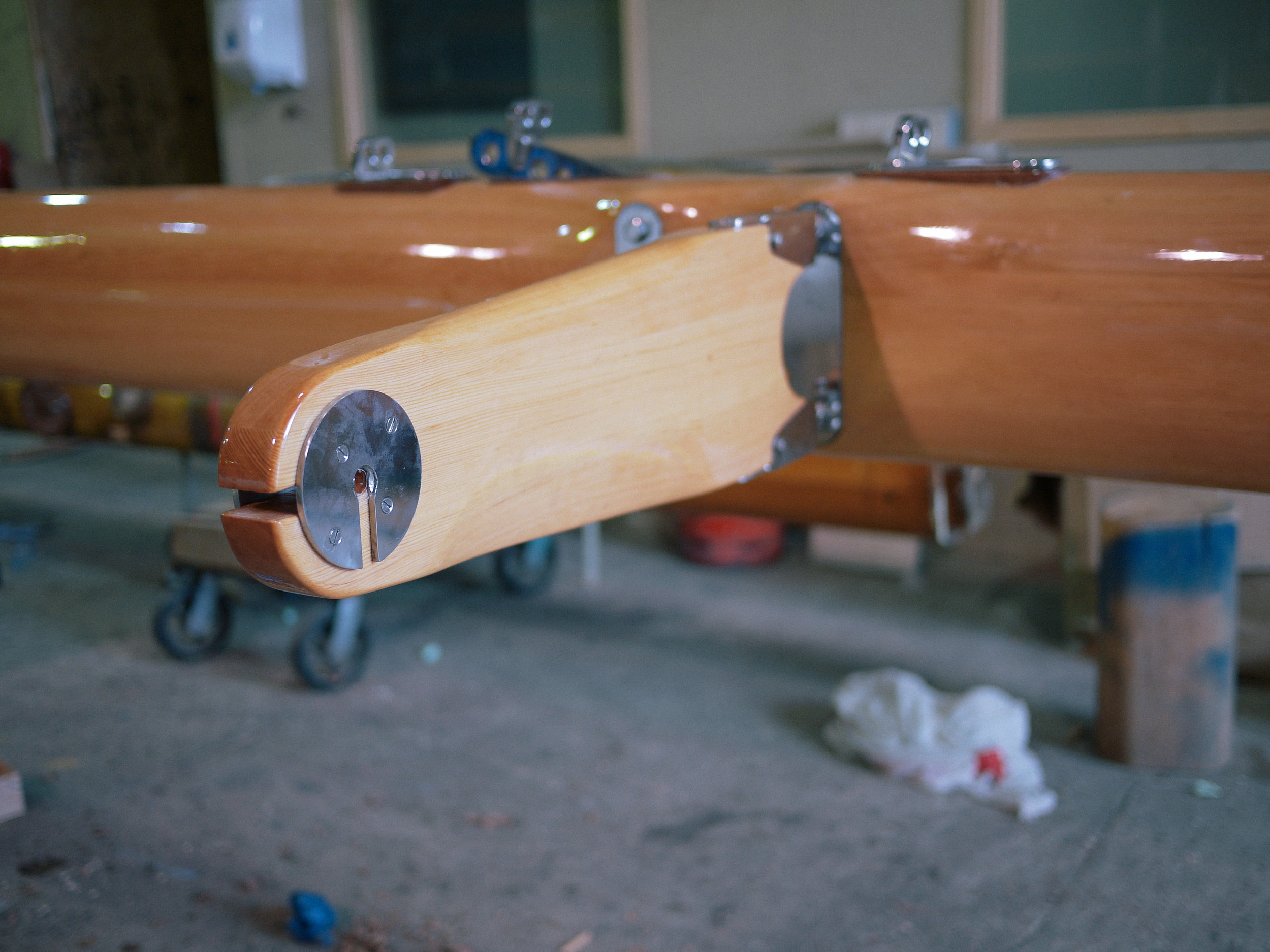


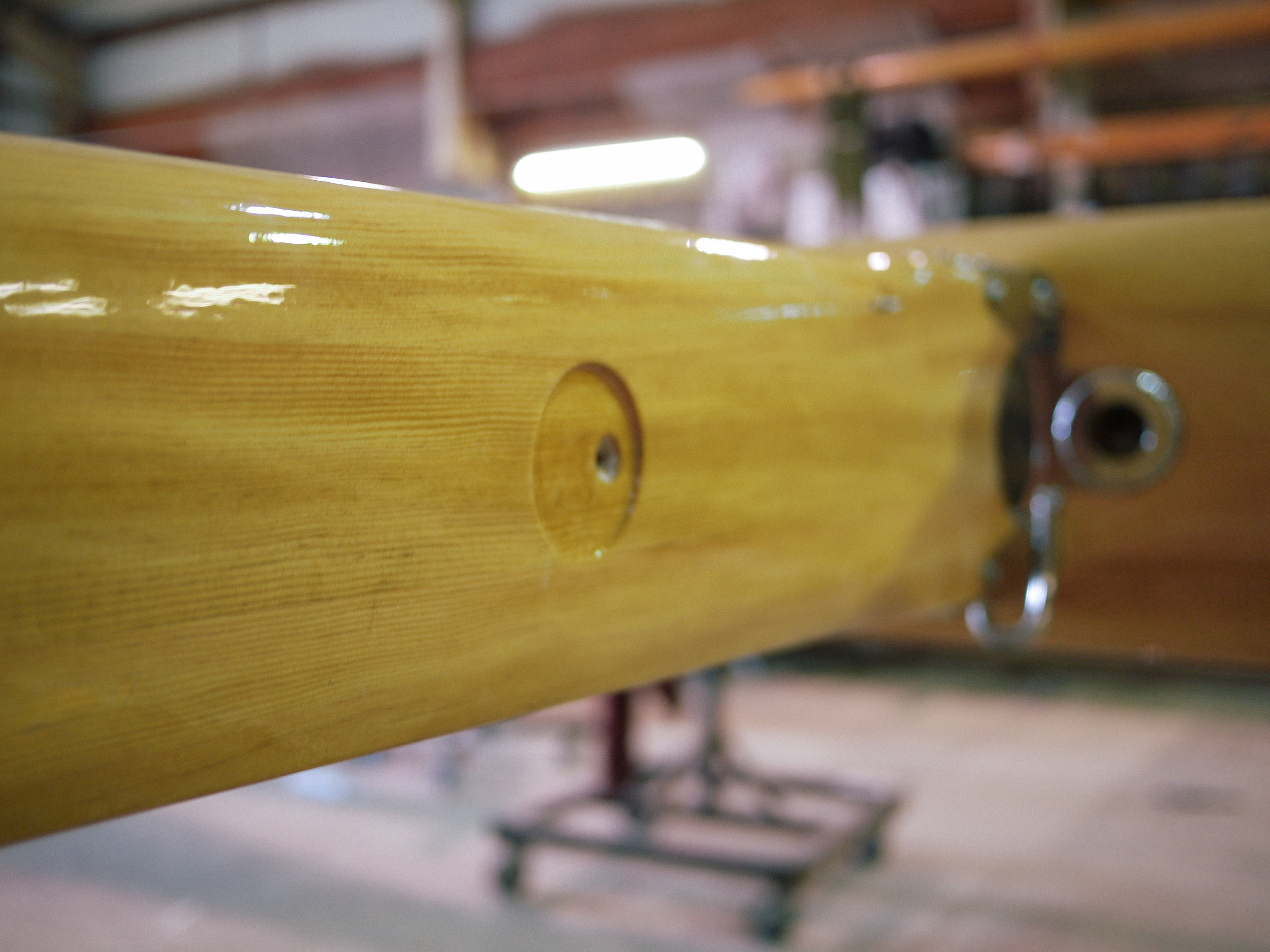
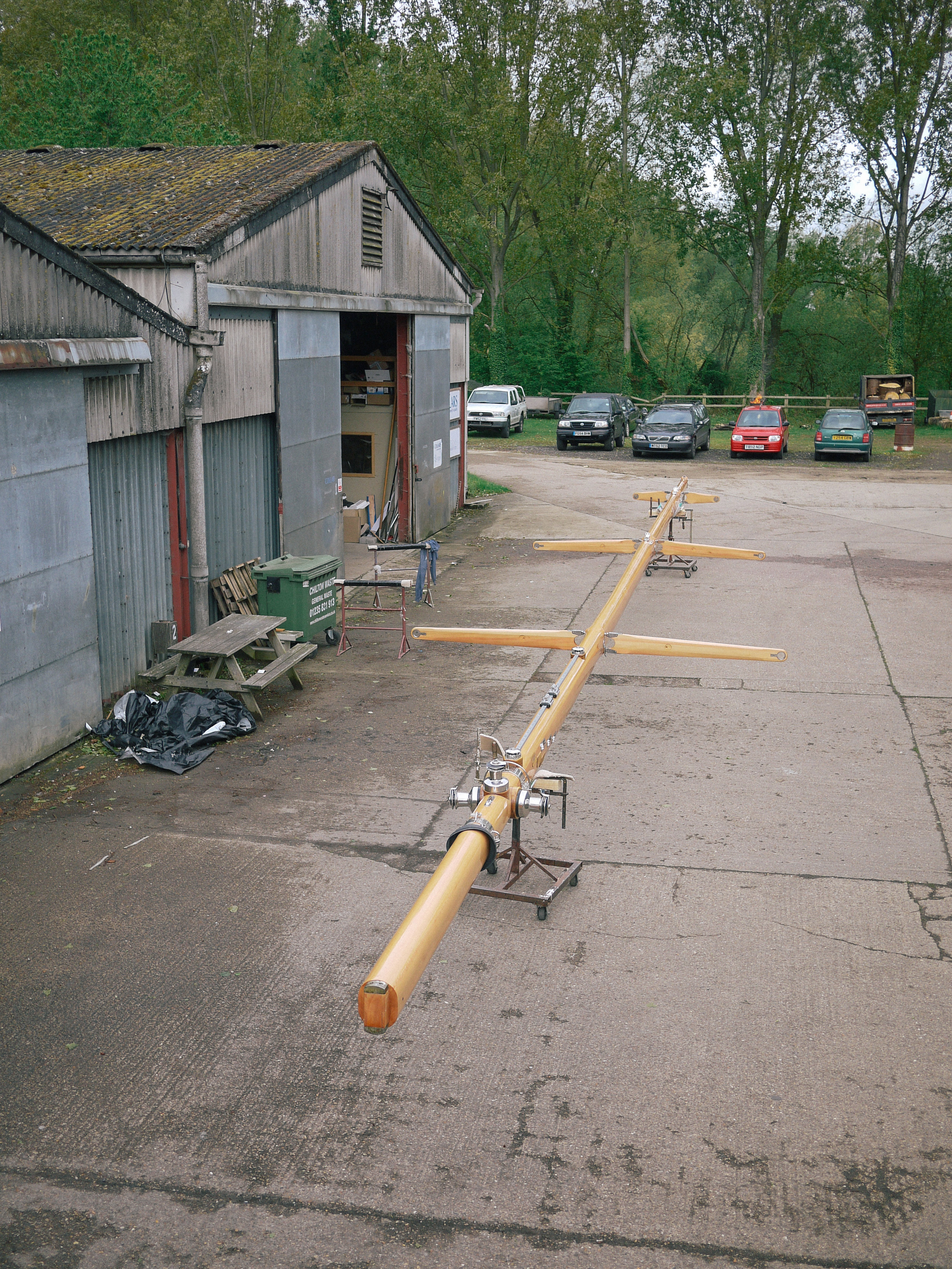
CETEWAYO’s mast is once again about to make it’s departure, and we are going to experience another void in the workshop. On the day the mast leaves, everyone in the workshop will feel that same sense of achievement and pride and we will also know it is being returned to the perfect custodian for one of our masts. Another of our projects we know will continue to be perfectly looked after and cared for and Collars respected for the wonderful craftsmanship that created it. Most importantly, it will give CETEWAYO the power and drive she needs.
Above everything else, it will be cherished in our memory as the last big mast from the hand of the immensely talented and dear friend who is sorely missed, Theo Rye (1968-2016). A void that can never be filled.
